Creating cards and questions
Creating cards
In a complex document, you can easily end up with many different placeholders, each served by different questions. In order to streamline the presentation of those questions, ClauseBuddy groups questions into cards.
Cards logically group multiple questions. They can have their own layout, settings and conditions, which you can configure by first selecting the card and then using the right panel.
Automatic card creation
The simplest way to create cards, is to click on the + icon in the upper left corner, choosing "Add questions from document", and then clicking the "Automatic" button at the bottom of the screen. ClauseBuddy will then invoke Artificial Intelligence to automatically create cards and questions.
You will not see the "Automatic" button when the use of Artificial Intelligence is disabled for your account.
Manual card creation
Cards can be created by clicking on the + icon in the upper left corner, and choosing Add card. Alternatively, cards can be added through the automatic import described below, or by copy/pasting through the "..." menus at the right side.

You can assign a different color to the card. This can sometimes be useful to differentiate types of cards. For example, some users prefer to assign a lighter color to cards that host less important questions. Example:
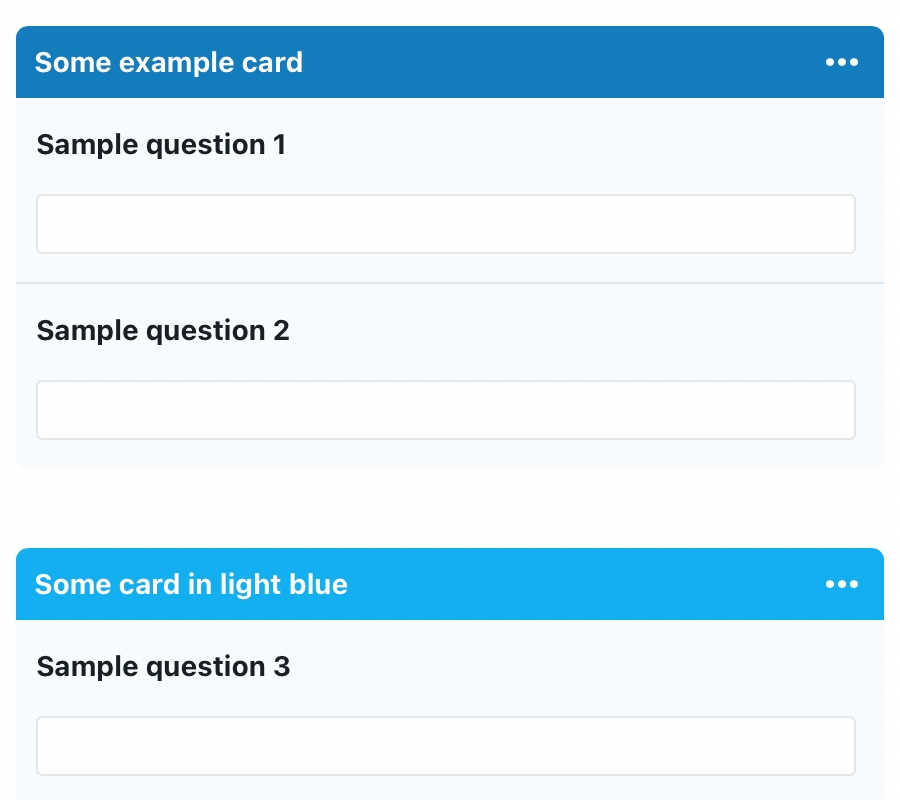
When no deviating color is assigned to a card, the default color will be used. This default color happens to be dark blue, but can changed in the Settings > Miscellaneous section of the Template:
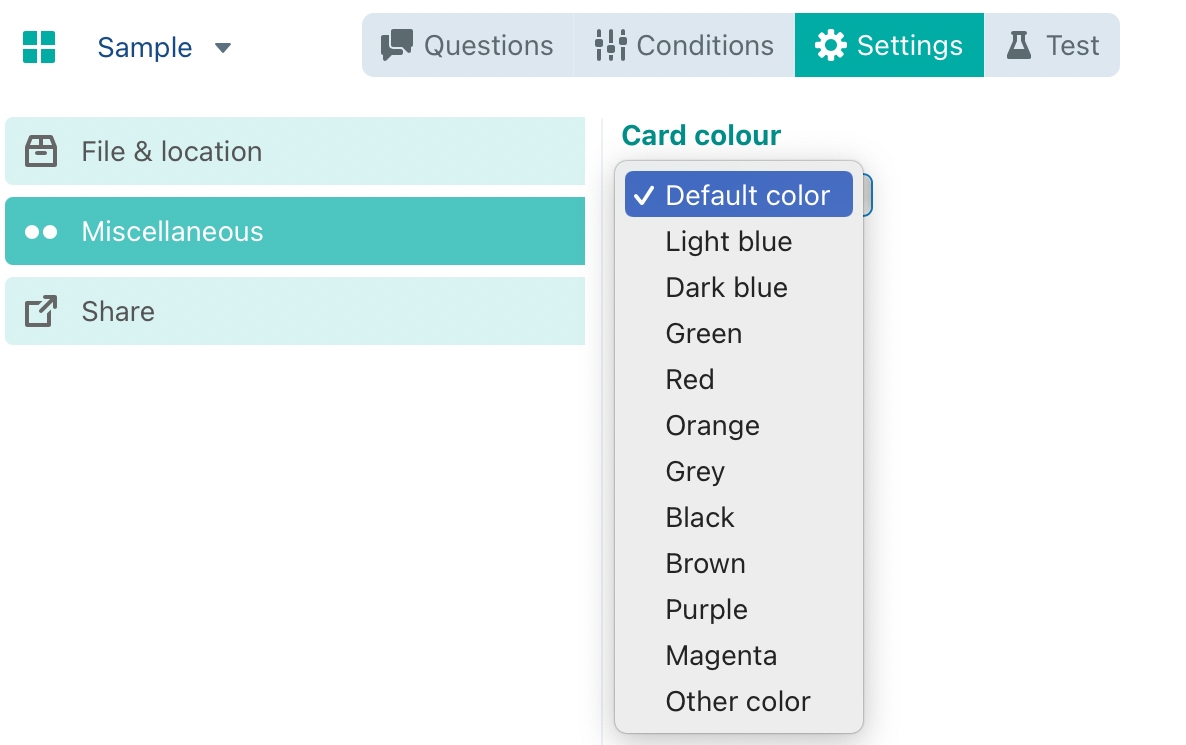
Another way to different cards is by assigning a left indent setting. Typically this is used to express that a certain card is dependent on some previous card, and contains questions with further details. By way of example: in the screenshot below, the bottom card will only be shown when "Continued usage?" is positively answered. At that point, more details are asked about the continued usage of the company car.
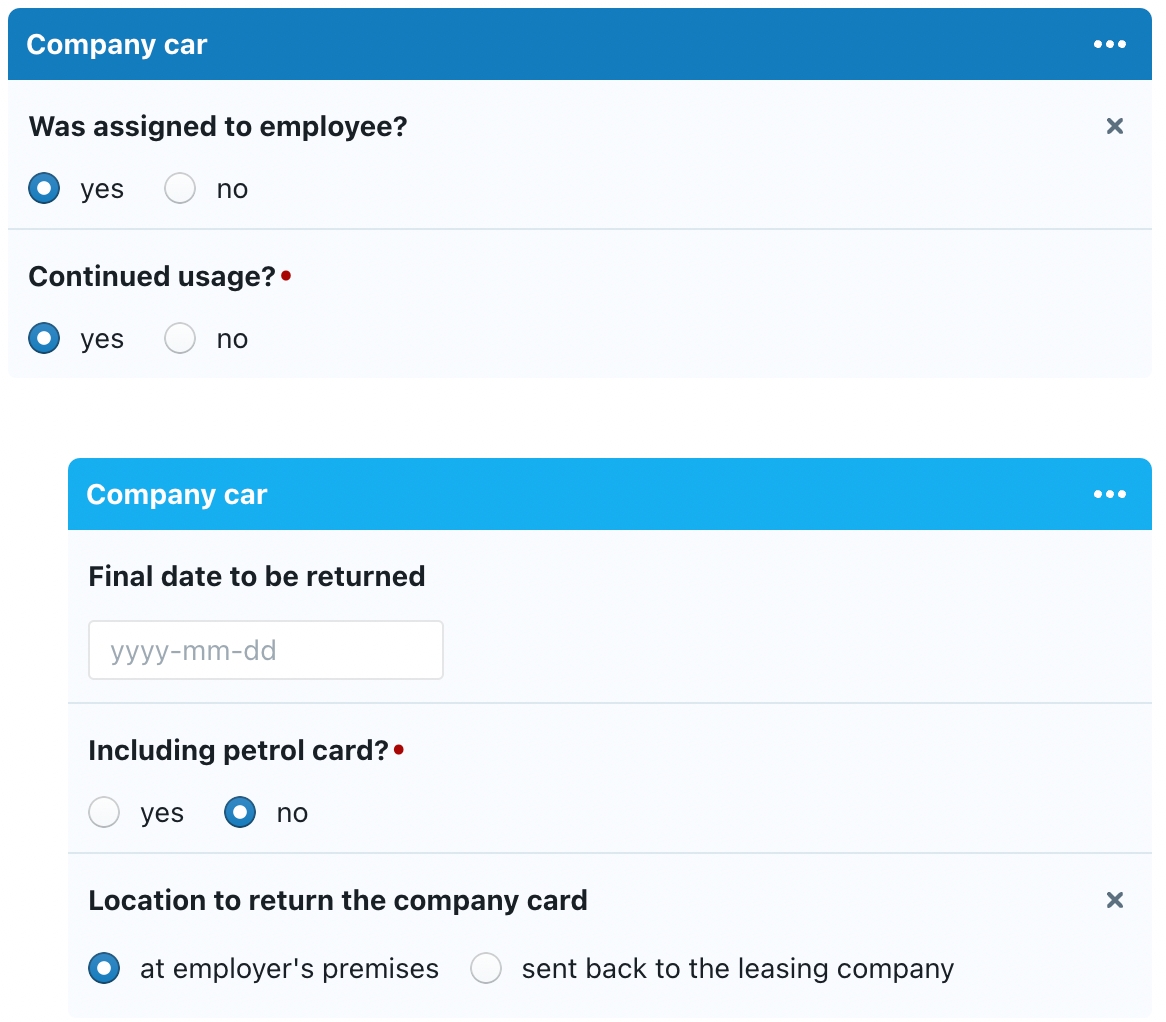
Through the right pane, you can also assign one or more conditions to each card. This is further explained on the separate page regarding conditions.
Creating questions
To create a question, you first create a card. Next, you can assign one or more questions to each card.
Types of questions
Questions can have different data types:
Yes / No — for answers involving a "yes" or "no" (or true / false).
Number — for answers consisting of a whole number, such as 5, 325 or 2022.
Decimal number — for answers consisting of "floating point" (decimal) numbers, such as 3.14 or 3214.5
Currency — for answers consisting of a (decimal) number combined with some currency, such as 2512.34 EUR or 3256 USD
Date — for answers consisting of a specific date, such as 23th January 2023
Duration — for answers consisting of a period of time, expressed as days / weeks / months / quarters / years.
Text — for answers that do not fit in any of the more specific categories listed above.
In addition, ClauseBuddy also allows you to insert comments and warnings towards your end-users, e.g. to warn them about invalid answers, or to provide additional legal guidance. Those comments and warnings are obviously not "questions" as such, but they are also displayed within a card.
It is important to choose the right data type, because some operations can only be performed on certain data types. For example, when you want to perform automatic calculations (e.g. an interest amount), you will need a (decimal) number or currency data types; when you would use a text data type for the interest rate or base amount, ClauseBuddy will not be able to perform the calculation, even when the end-user would happen to insert only digits in the answer box.
Usually it is quite clear which data type you want to use, but there are some interesting twists nevertheless.
It may be tempting to think about phone numbers as being numbers, but you are strongly advised to use the text data type instead. After all, uses will often want to insert spaces and prefix-symbols, which cannot be inserted in the number boxes that are shown for number-type answers.
Similarly, when dealing with addresses, you are strongly advised to use text questions for the house number and the zip code of the city, as some countries allow letters in house numbers and zip codes.
Through predefined answers and labels (see below), yes / no answers can be rephrased so that they look slightly different. For example, in assessment forms it may make sense to phrase the answers as true and false instead of yes and no. Similarly, in complex templates it may be more user-friendly to rephrase a yes/no answer as "Insert a non-compete clause" and "Remove the non-compete clause".
Configuring questions
Similar to configuring a card, you can configure a question by first selecting it and then changing options in the right-side panel.
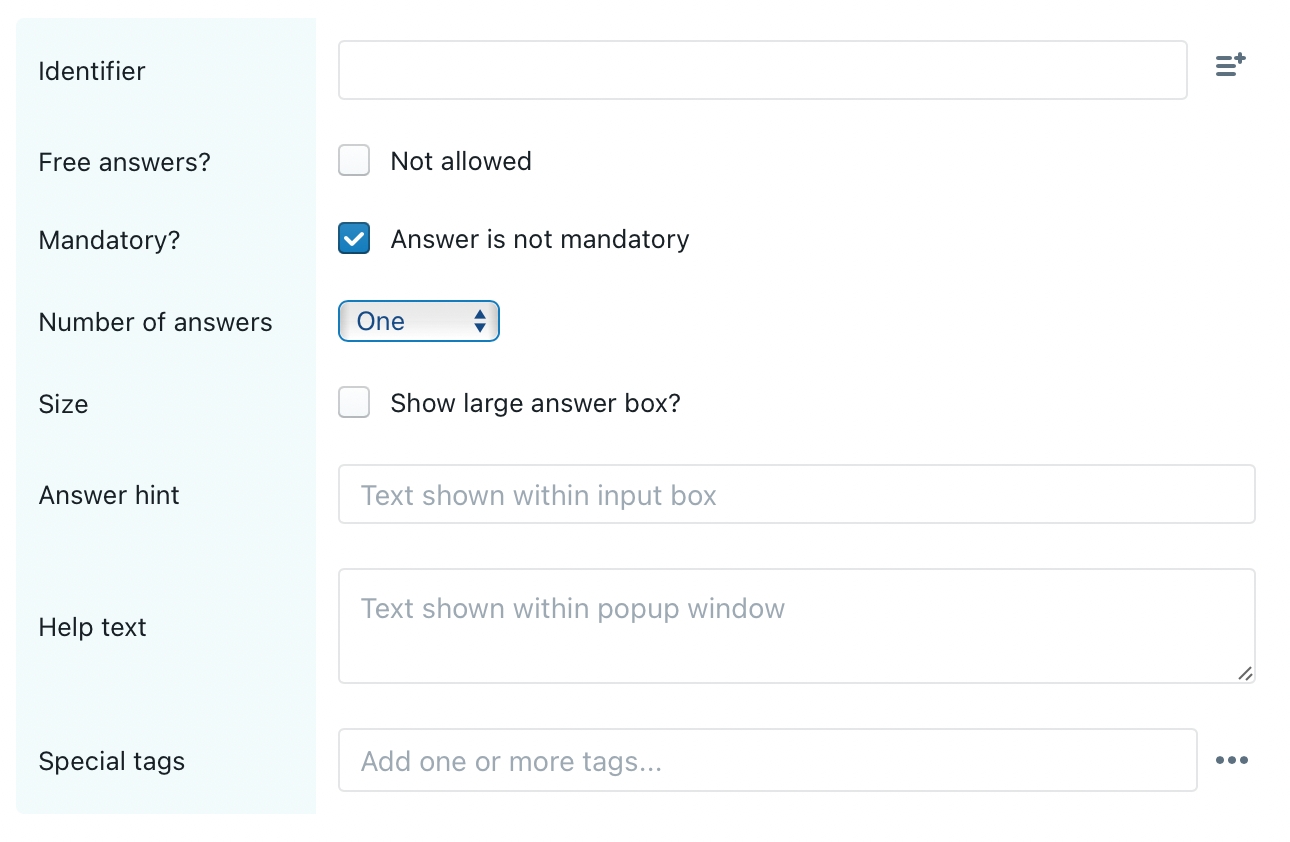
Identifier
ClauseBuddy will automatically create a link between a question and a placeholder when the text of the question corresponds to the placeholder. For example, a question with title "amount" will be automatically linked to a placeholder "amount", so that the end-user's answer to that questions will automatically be filled in.
However, there will be many situations where questions should be more descriptive than a few words. You can therefore also explicitly assign an "identifier" to a question. That identifier will then serve as the link between the placeholder and the question.
For example, assume you would phrase your question "How many items will be ordered?" instead of simply "amount". If you then assign identifier "amount" to the question, ClauseBuddy will once again be able to assign the answers to the respective placeholders.
Free answers
When you insert predefined answers (discussed below), you can check this option to also allow the end-user to insert a custom, non-predefined answer.
For example, when your end-users would typically choose between French, German and Dutch jurisdictions, it is probably a good idea to insert predefined answers for those countries. However, if you want your end-users to occasionally choose another jurisdiction, you can check the Free answers option.
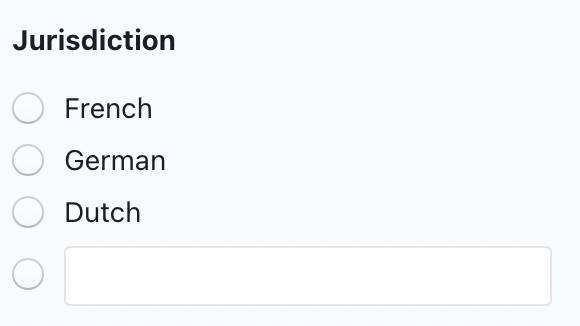
Mandatory answer?
With this setting, you can configure whether answering this question is mandatory.
Mandatory questions are indicated with a red bullet next to the title:
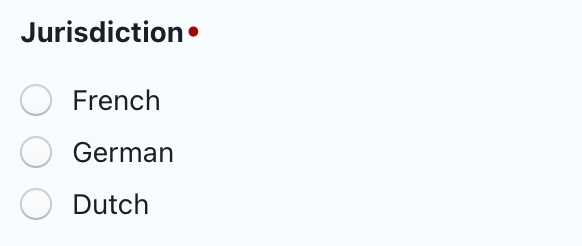
If at least one visible mandatory question is not answered, a red warning will be shown. (The end-user can click on this warning text to get the actual list of unanswered mandatory questions.)

Even when some questions are marked as mandatory, you can globally disable the indicator in the Template's settings:

Number of answers?
Through this setting, text-based answers can optionally be configured to receive multiple answers.
For example, if customers can order products A, B and C, you can convert a question that allows to order only one product at a time...

... to a question that allows the end-user to order multiple products at the same time:
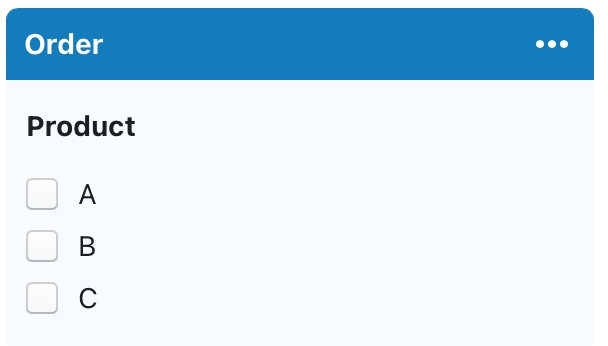
(Note the subtle change from a round button to a square-button in each of the predefined answers! Unlike the round buttons, multiple square buttons can be checked at the same time.)
When you also check the previously discussed "Free answers?" option, users can even specify their own customised products:
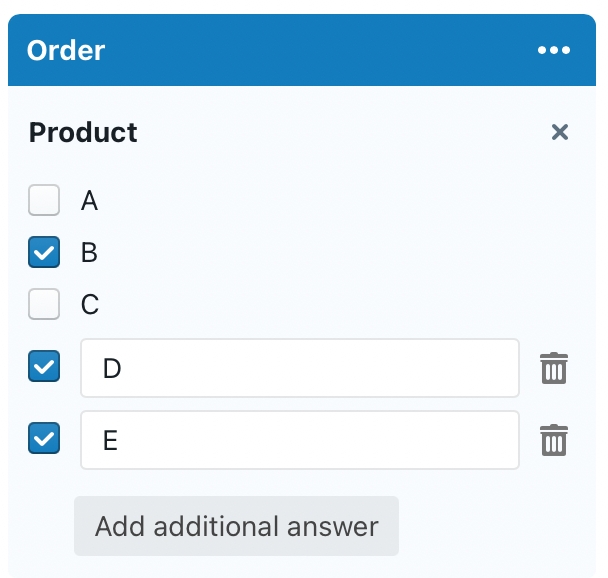
Answer size
By default, the answers for text questions need to be inputted in a single-line box. When this setting is enabled, a large multi-line area box will be used instead:
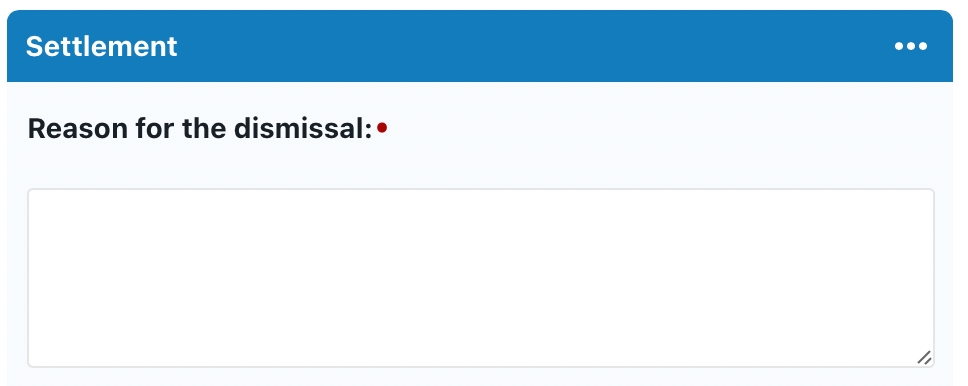
Answer hint
To facilitate the ease-of-use of your template, you can provide an answer hint: text that will be displayed in the answer box when no answer has yet been given.
In the following screenshot, the answer hint refers to the way telephone numbers are preferably structured:

Help text
For some questions, it may be useful to provide context, warnings or recommendations.
One possibility is to create a comment or warning question. However, (except when its condition would not be met) such comment or warning will be prominently visible on the screen:
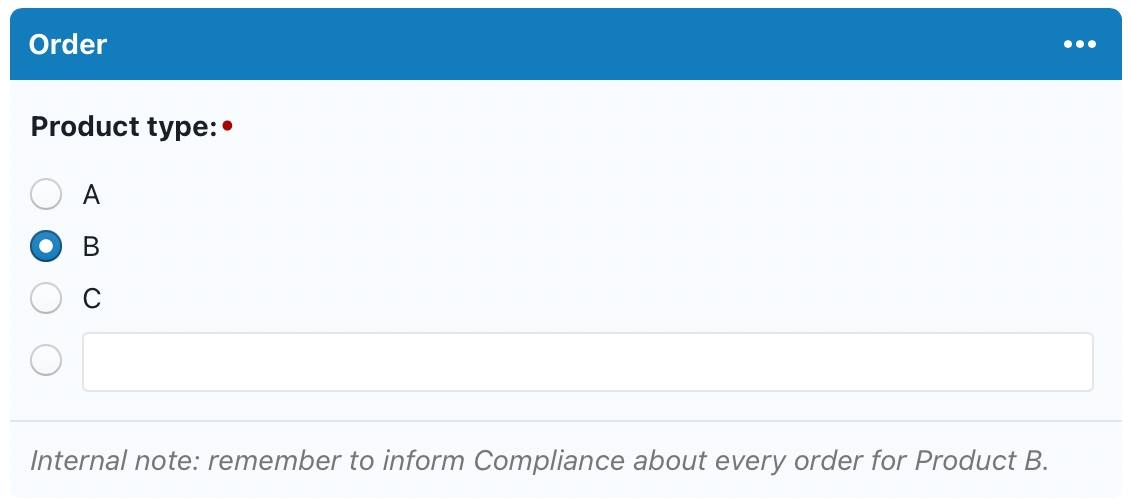
Help texts provide for a more subtle warning or recommendation, because the end-user must hover his mouse over the question-mark:

Special tags
Special tags are an advanced topic. They allow you to integrate ClauseBuddy templates with third party services, such as external contract archives.
Predefined answers
For every answer, you can optionally create a set of predefined answers from which the user can choose. For example, when asking for an applicable interest rate, you can predefine a few commonly used rates.
You can insert predefined answers by selecting the relevant questions and then clicking on either the + button in the toolbar, or the "..." button next to a question.
Assigning a label
For most questions, the value of the predefined question can at the same time serve as the label of that question. For example, for the following question, it will probably be clear for the end-user what each option represents:
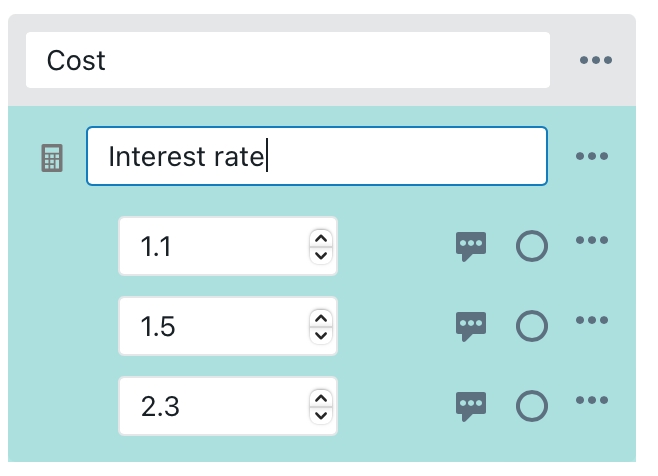
Shown towards the end-user as:
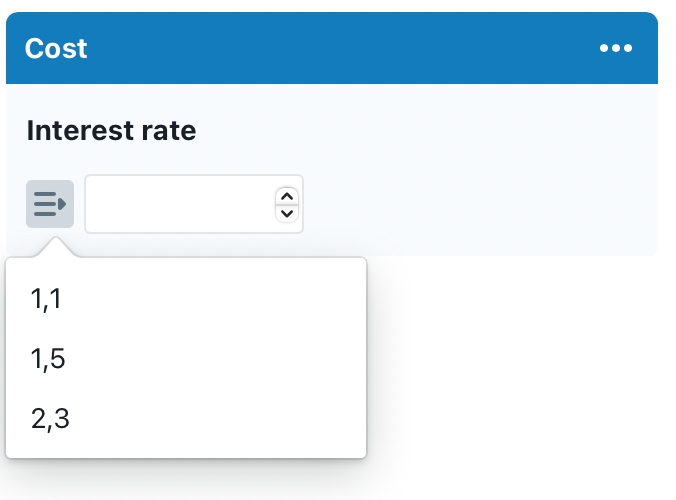
Although it will probably be more user-friendly to show these predefined answers together with a percentage-sign:

Sometimes the actual value may even be difficult to understand for the end-user. For example, let's assume that in an intragroup-document that allows an entity to order some service, the internal billing number must be specified. Numbers such as "87842", "98951" and "656421" are probably meaningless for most users. It's much more user-friendly to assign a label to such numbers, and present that label towards the end-user, even when internally the number behind that label will be used.
You can assign such a label by clicking on the label icon at the right of the predefined question. In the preceding intragroup document, this would for example be as follows:

... which will be shown towards the end-user as:
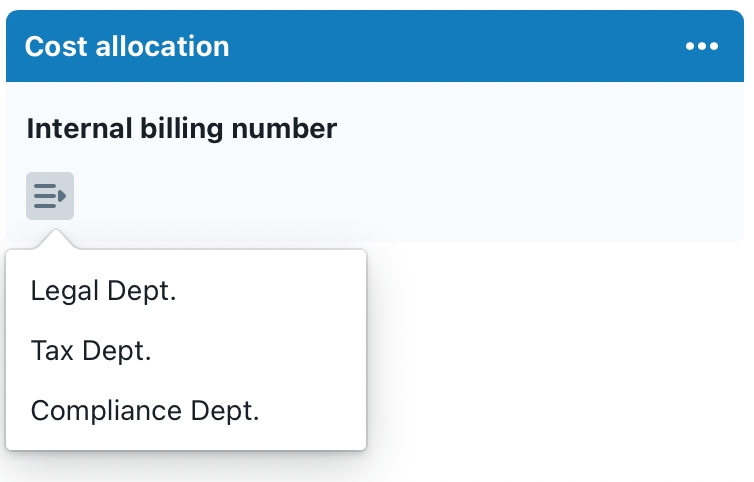
To really drive the message home: for all other purposes except question display, ClauseBuddy will work with the actual value instead of the label that happens to get displayed. So if the user would choose "Tax Dept.", then the answer will be number "98951", and not text "Tax Dept."
Default predefined answers
You can optionally indicate that a predefined answer should be the default value, by clicking the circle to the right of the predefined answer.
For example, the following question:
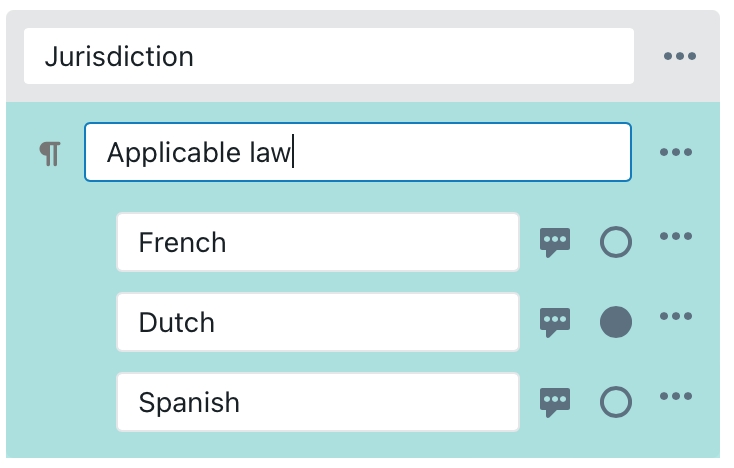
will cause "Dutch" to be pre-selected when the end-user starts a document based on this template:
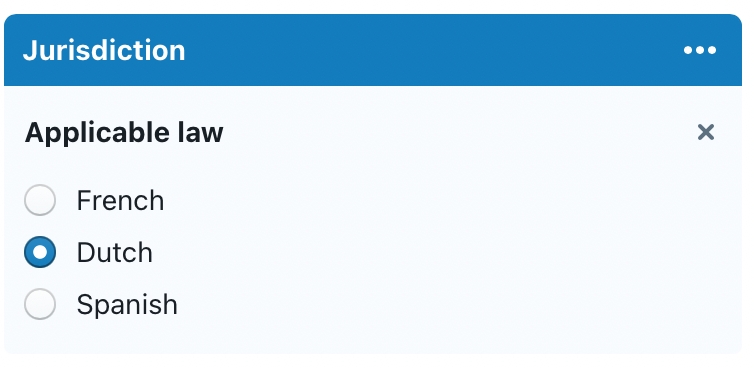
You can even indicate that multiple answers can act as the default answer. You may think that this does not make sense — after all, there can only be one default answer, right? — but there are actually two situations where this makes perfect sense:
A question may have been configured as taking multiple answers. For example, on an order form for a translation service, it may make perfect sense for a question regarding target languages to have both Dutch and Spanish indicated as being included by default.
Even for questions that take only a single answer, it may be relevant to configure multiple predefined answers as being the default answer, since predefined answers may become disabled due to their condition not being met. In the screenshot above, for example, both Dutch and Spanish may have been configured as the default, because it can happen that Dutch gets disabled because the product being ordered cannot be delivered, and therefore gets disabled through some condition associated with that predefined answer.
Settings
You can configure a predefined answer by clicking on it, and then changing the settings on the right side.
The most important configuration consists of the predefined answer's conditions, to define when a predefined answer should (not) be presented towards the end-user. This is covered in a separate article on conditions.
Similar to a question, you can define a help text for each individual predefined answer. It will be displayed in a question mark next to the predefined answer, to provide more context, or comments or warnings:

Automatic creation of questions
When you select Add questions from document, ClauseBuddy will extract all cyan-highlighted text parts from your document.

ClauseBuddy will then present them in a dialog box, where you can rephrase questions, alter their type, delete irrelevant items and change the ordering.
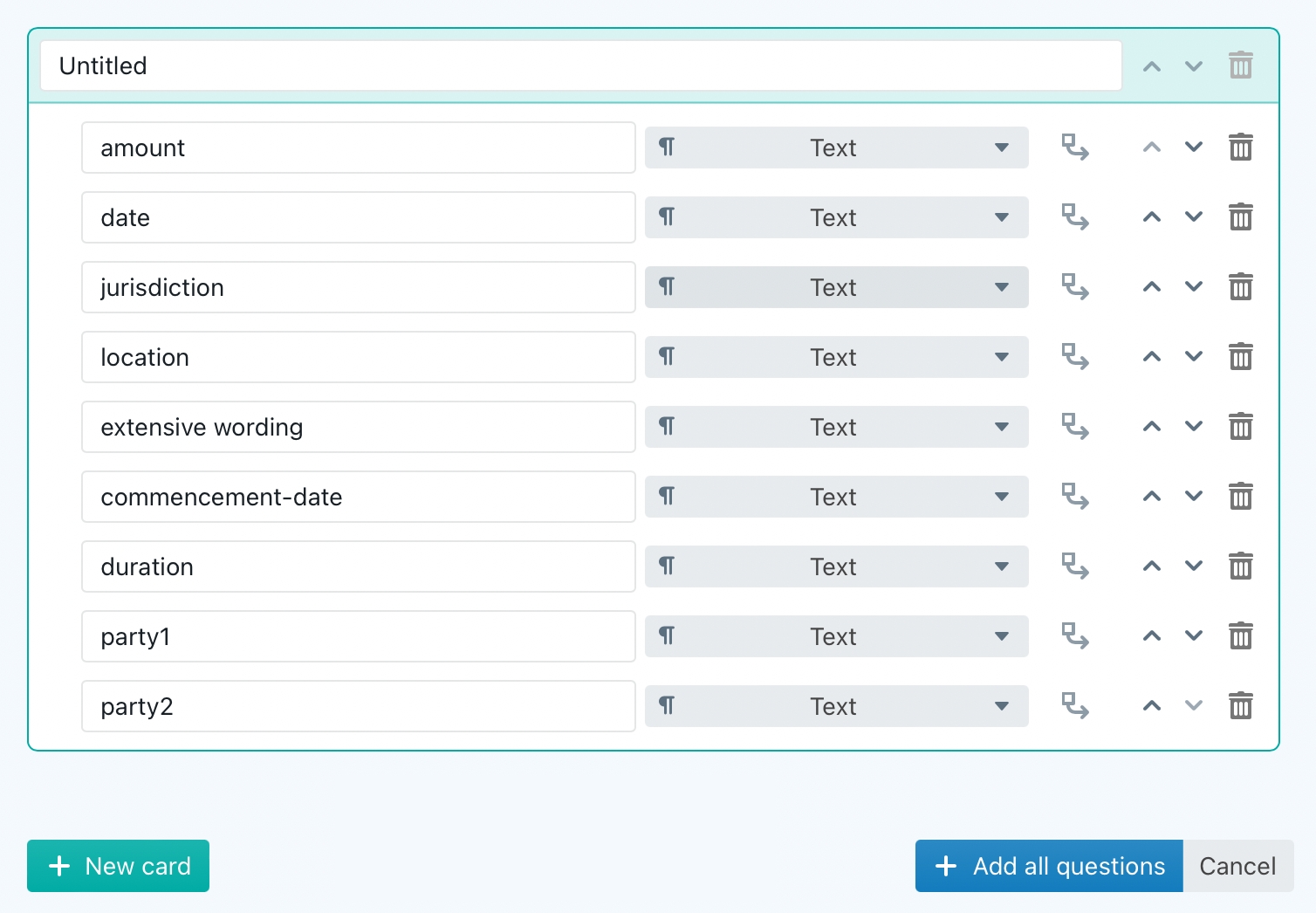
You can reorder the questions by clicking the up and down icons at the right of each item.
Large-distance moves (e.g., to the bottom of a card, or to a subsequent card) are best served by clicking on the popup-menu to the left of the up-icon.
You can create any number of new cards by clicking on the green New card button.
When you delete a question, it will be added to the list of deleted questions that will then popup at the bottom of the dialog box. You can easily re-insert the deleted question by selecting it again from the popup list that is shown when you click on the Deleted questions button.
When you click on the Add all questions button, the dialog box will be dismissed.
Last updated